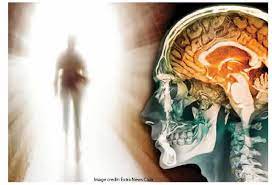The genes that increased expression after the post-mortem interval were specific to one type of cell: inflammatory cells called glial cells.
The researchers observed that glial cells grow and sprout long arm-like appendages for many hours after death.
Glial cells are non-neuronal cells in the central nervous system (brain and spinal cord) and the peripheral nervous system that do not produce electrical impulses.
According to the researchers led by Fabien Dachet, these findings confirm that genes involved in brain activity are more prone to degradation during the post-mortem interval.
The researchers said their findings raise awareness of the exceptional value of fresh human brain tissues for genomic studies as well as a need to apply additional scrutiny to interpret results from human postmortem brain studies.
“Genome-wide measures of RNA Integrity Number stability as a function of the PMI from studies such as the one here could, in fact, be used to determine and perhaps correct for the stability of individual genes and exons as a function of time and temperature during the PMI.
“This correction would need to be combined with knowledge about the cause and timing of death, since ongoing changes such as hypoxia prior to death could also play a significant role in the specific RNAs”
Meanwhile, a Specialist Registrar/Associate Fellow in Anaesthesia & Critical Care at the Irrua Specialist Teaching Hospital, Edo State, Dr. Julian Ojebo, said the study is super ultra-high technology and none of the things mentioned in the study can be done in Nigeria.
“However, there’s a growing interest that neurons achieve some sort of growth and replacement, even when damaged, despite popular knowledge that neurons cannot grow once damaged.
“So, the authors are trying to compare normal brain tissue genomics and proteomics with a diseased brain like Alzheimer.
“The only way to obtain these tissues is when patients die and their brains are quickly harvested for the study and those that will be obtained as per the protocol for diagnosis and management of epilepsy – this includes biopsy but can’t be done in this environment,” he said.
Also speaking, Consultant Family Physician and Head of Department, Family Medicine Department at the University of Ilorin, Dr. Ibrahim Kuranga-Suleiman, says the information in the study is not for human consumption but it is an experimental issue.
“They are microscopic information; they are not for the general populace. It’s based on the report on the laboratory examination of the tissue of epileptic patients and people with psychiatric disorder. It may not have serious meaning to the human populace, it’s just microscopic information.
“The scientists investigated the neuronal activities using rats and animal tissue, but it doesn’t concern the general populace.
“It’s especially for the pathologists that are working with the electron microscope, it doesn’t concern specialists dealing with human beings that are alive,” Kuranga-Suleiman explained.
source: Punch

 A new study shows that in the hours after we die, certain cells in the human brain are still active. In a newly published study in the British weekly journal Nature, the University of Illinois Chicago researchers looked at gene expression in fresh brain tissue.
A new study shows that in the hours after we die, certain cells in the human brain are still active. In a newly published study in the British weekly journal Nature, the University of Illinois Chicago researchers looked at gene expression in fresh brain tissue.




